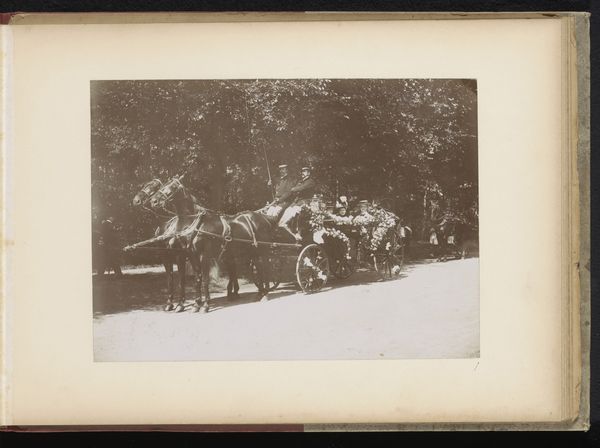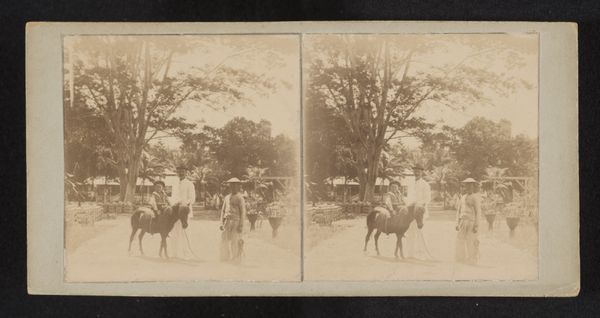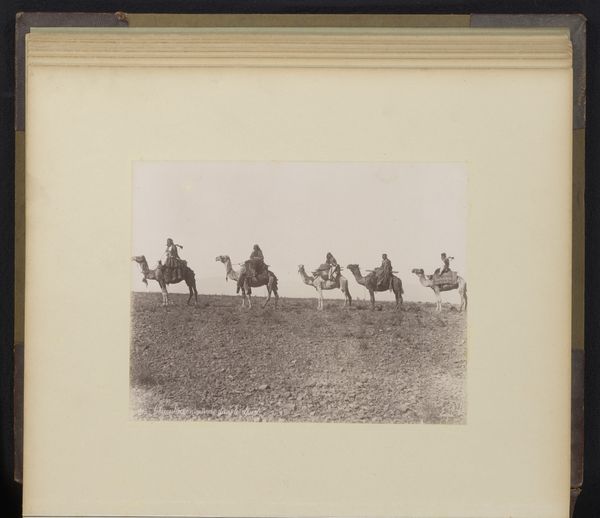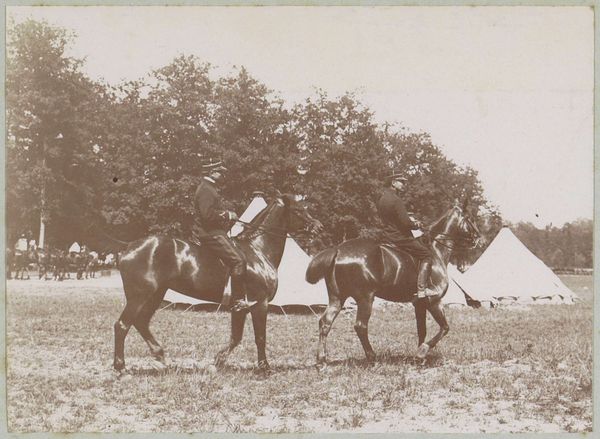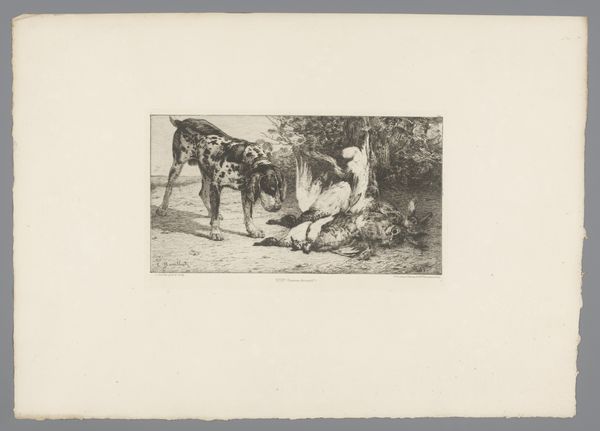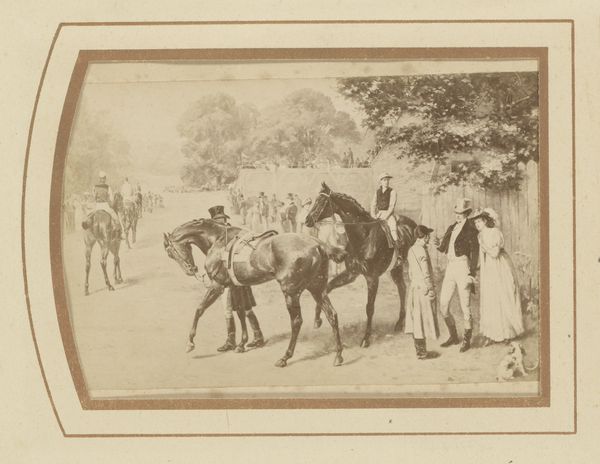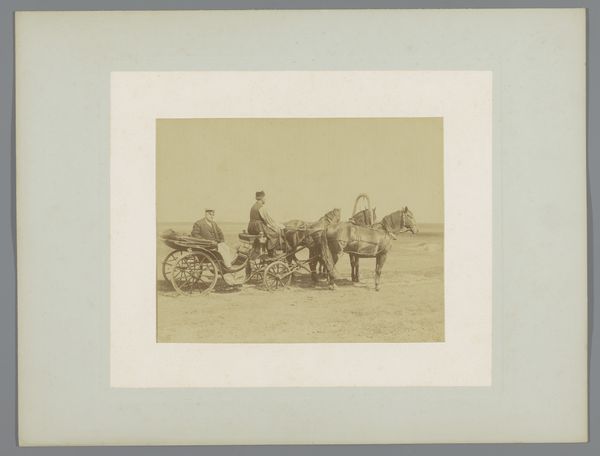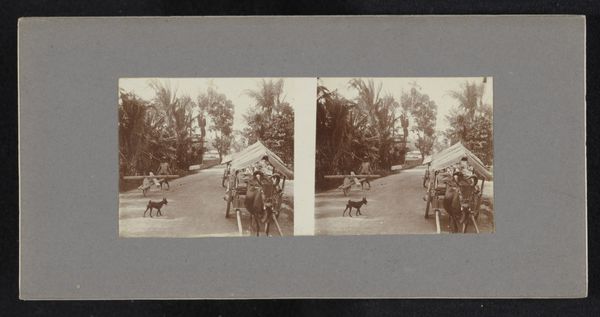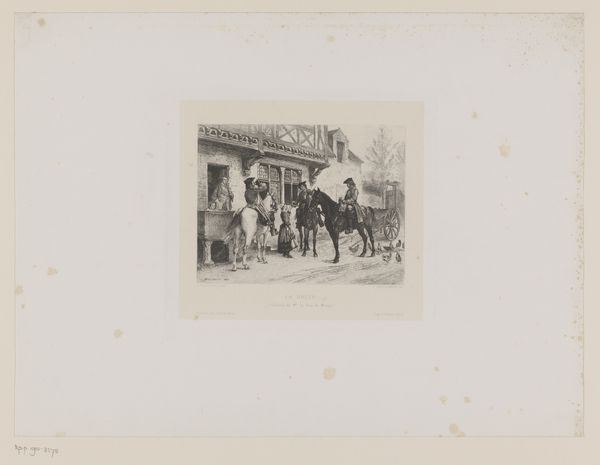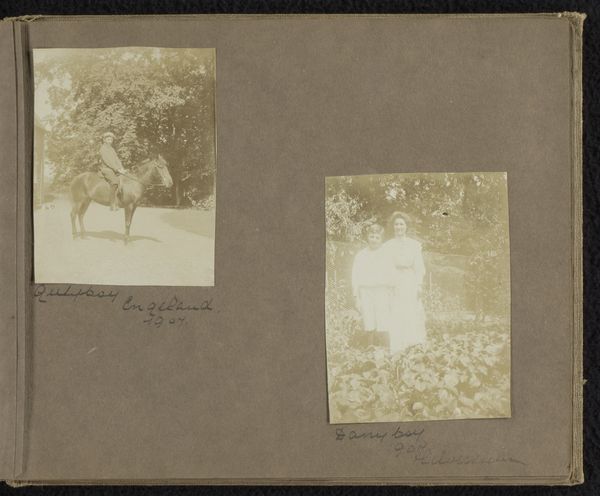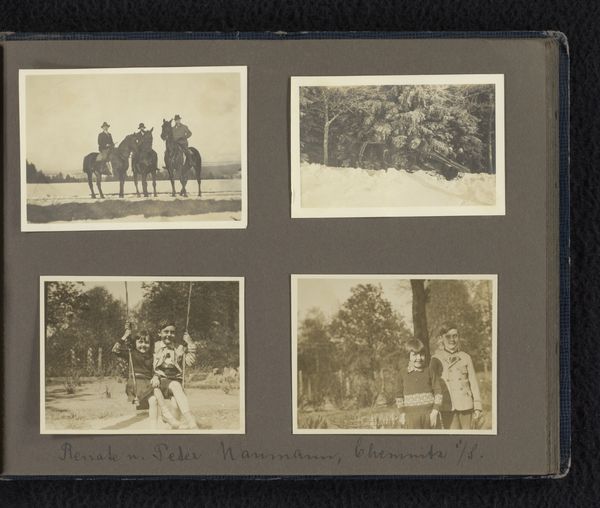
Portret van Simon Thomas en zijn echtgenote te paard 1890 - 1920
0:00
0:00
antoniusjoannesvanderstok
Rijksmuseum
photography, gelatin-silver-print
#
portrait
#
print photography
#
pictorialism
#
wedding photography
#
landscape
#
photography
#
group-portraits
#
gelatin-silver-print
#
genre-painting
#
realism
Dimensions: height 167 mm, width 227 mm, height 290 mm, width 352 mm
Copyright: Rijks Museum: Open Domain
Editor: Here we have a photograph titled "Portret van Simon Thomas en zijn echtgenote te paard," or "Portrait of Simon Thomas and his wife on horseback." It was taken sometime between 1890 and 1920. The medium is gelatin silver print. The texture looks surprisingly smooth, like velvet. What can you tell me about it? Curator: Notice the gelatine silver print – a relatively new, mass-producible process at the time. This choice isn't just aesthetic; it reflects the increasing accessibility and commodification of photography. This process changed how people consume images and document their lives, even their wedding days. Before this time, it was rarer for the middle class. Editor: That makes a lot of sense. It's a different type of status symbol, making documentation cheaper but still luxurious, right? Curator: Exactly. Consider the context: The rising middle class craved representations of their status and relationships. How does photography allow them to negotiate old social hierarchies? What kind of labour went into its making and mass consumption? Editor: So, it’s not just a pretty picture. It says a lot about who had access to artmaking and self-representation back then. It makes you wonder, doesn't it, what other kinds of portraits from different parts of the population are simply missing from our art history because those folks didn't have access to the means to create these pieces? Curator: Precisely! This print challenges the idea of unique artworks when production changes the act of creation and distribution. Editor: Thinking about it this way makes me consider art’s social function beyond just aesthetic pleasure. I’ll keep this in mind! Curator: Good. By looking at materials, processes, and social context, we gain a deeper appreciation of photographic works like this.
Comments
No comments
Be the first to comment and join the conversation on the ultimate creative platform.

